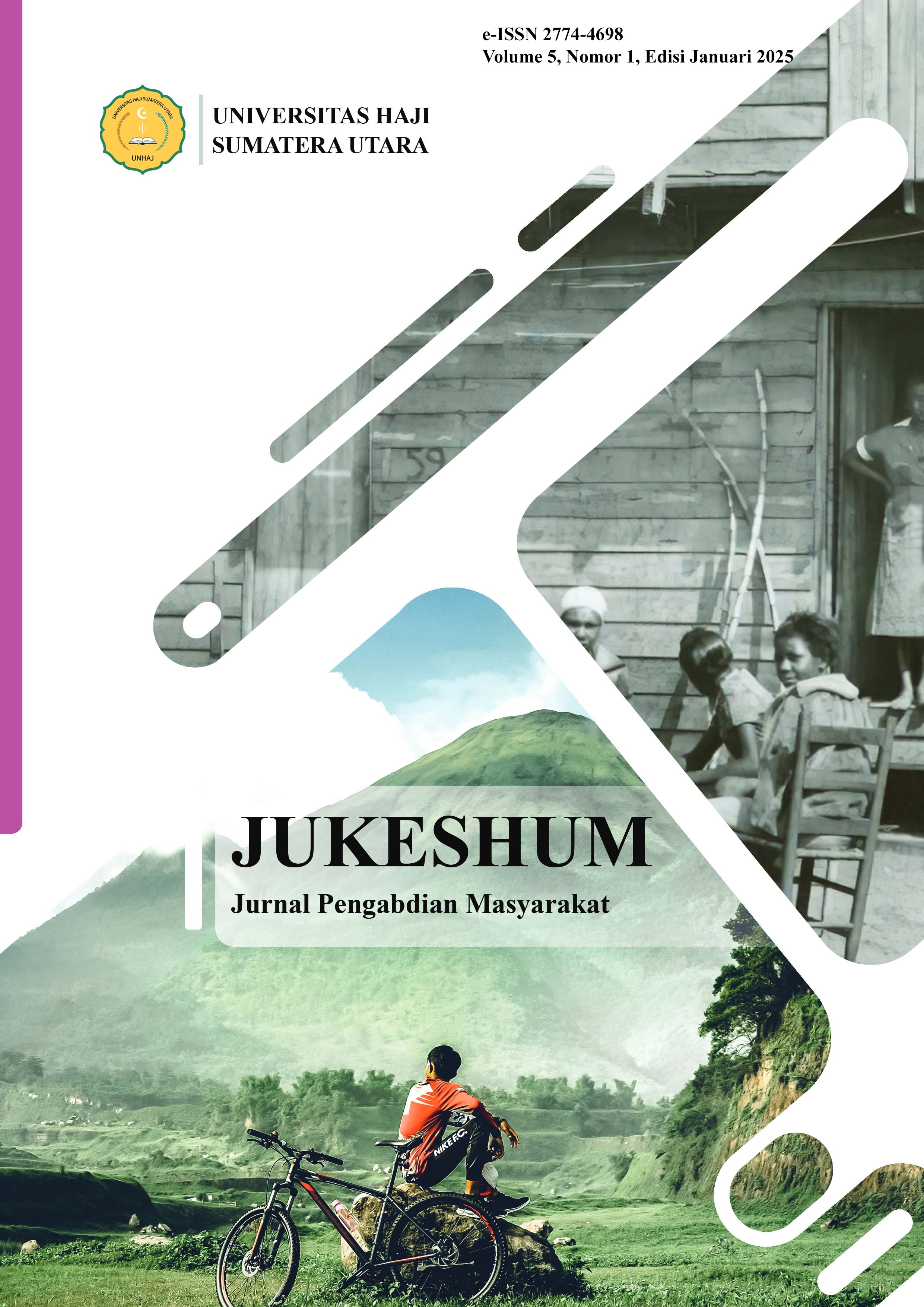Optimization Of Digital Recording as A Performance Monitoring Tool for Non-Civil Servant Human Resources in Kediri District Hospital
Optimalisasi Pencatatan Digital Sebagai Alat Pemantauan Kinerja SDM Non ASN di Rumah Sakit Kabupaten Kediri
DOI:
https://doi.org/10.51771/jukeshum.v5i1.1097Keywords:
Optimalization, Monitoring Tools, PerformanceAbstract
The health sector is the main focus of the government. Hospitals as public institutions in the field of health services have great potential to be integrated with information technology. Human resource management in hospitals faces the challenges of task complexity and high job demands. Monitoring HR performance can be done manually or by an application system, but some hospitals still use manual methods. Kediri Regency Hospital (RSKK) is a type B hospital with 925 employees, where the performance monitoring of Non-ASN employees is still manual. This study aims to analyze the factors that cause the suboptimal digital recording as a tool to monitor human resource performance at RSKK. This study uses a descriptive qualitative approach with observation, interview, and documentation techniques. Triangulation of sources is used to check the validity of the data. Data analysis includes data reduction, data presentation, and drawing conclusions based on research findings. The results of this community service activity show that RSKK already has SIMPEG, but it is not optimal with manual non-ASN performance recording. and found 3 problems that need to be considered, namely: There is no workflow and procedures related to digital recording of health HR performance, policies and regulations related to the use of the system have not been optimal, and monitoring and evaluation of health HR performance is not optimal. Problem-solving interventions are needed through SWOT analysis. The SO strategy in the I-Aggressive Strategy quadrant was applied, resulting in a final score of SW 1.61 and O-T 1.72. This condition shows the great strength and opportunity for optimizing digital recording as a tool for monitoring human resource performance.
References
Astuti, A. M. I., & Ratnawati, S. (2020). Analisis SWOT Dalam Menentukan Strategi Pemasaran (Studi Kasus di Kantor Pos Kota Magelang 56100). Jurnal Ilmu Manajemen, 17(2), 58–70.
Fentiana, N., & Ginting, D. (2020). Strategi Peningkatan Pendapatan Rumah Sakit Berdasarkan Analisis SWOT. Jurnal Ilmiah Universitas Batanghari Jambi, 20(3), 1008. https://doi.org/10.33087/jiubj.v20i3.1034
Jayawisastra, P., SUMAMPOUW, M., CHAIN, V., Lestari, P., & Yulian Situmeang, W. (2023). Analisis Rencana Strategis Sumber Daya Manusia (SDM) Keperawatan Di Rumah Sakit Wilayah Jakarta. Indonesian Journal of Nursing Scientific, 3(1), 20–40. https://doi.org/10.58467/ijons.v3i1.49
Konsil Kedokteran Indonesia. (2012). Peraturan KKI Tentang Standar Kompetensi Dokter Indonesia.
Murni Arumahati, & Satriya Wijaya. (2024). Kajian Literatur Perencanaan Sumber Daya Manusia yang Efektif Untuk Membangun Sumber Daya Insani yang Unggul di Rumah Sakit. Jurnal Kesehatan Masyarakat Indonesia (JKMI), 1(4), 7–19. https://doi.org/10.62017/jkmi.v1i4.1331
Nasution, S., & Sari, M. B. P. (2020). Sistem Informasi Kepegawaian Rumah Sakit Universitas Riau Berdasarkan Standar Nasional Akreditasi Rumah Sakit (SNARS). IT Journal Research and Development, 5(1), 1–10. https://doi.org/10.25299/itjrd.2020.vol5(1).4553
Noviar Panggabean, T., & Sianipar, E. (2019). Analisis Sistem Pelepasan Informasi Rekam Medis Dalam Menjamin Aspek Hukum Kerahasiaan Rekam Medis Di Rumah Sakit Imelda Pekerja Indonesia Medan Tahun 2018. Jurnal Ilmiah Perekam Dan Informasi Kesehatan Imelda (JIPIKI), 3(2), 438–443. https://doi.org/10.52943/jipiki.v3i2.60
Putri, S. C., & Purwaningsih, E. (2023). Analisis Kepuasan Kerja Karyawan UPPKJK (Unit CaseMix) Rumah Sakit Menggunakan Fishbone Diagrams. Jurnal Pengabdian Kepada Masyarakat Nusantara (JPkMN), 4(1), 1649–1654.
Putro, S. E. (2024). Strategi SDM untuk Meningkatkan Kinerja Karyawan di Era Digital. Management Studies and Business Journal (PRODUCTIVITY), 1(3), 402–420. https://doi.org/10.62207/fh29cd57
Ratna Wardani, R. W., Muhammad, I. N., Abidin, A. Z., & Setiawan, D. (2022). Optimalisasi Sim-Rs Dalam Pendaftaran Pasien Online Di Rsud Slg Kediri. Jurnal Kreativitas Dan Inovasi (Jurnal Kreanova), 2(3), 93–97. https://doi.org/10.24034/kreanova.v2i3.5343
Ritonga, A. E., Sinaga, K., & Saragi, S. (2023). Pengaruh Transformasi Digital Terhadap Pengembangan Sumber Daya Manusia (Sdm) Di Dinas Kependudukan Dan Pencatatan Sipil (Disdukcapil) Kota Pematangsiantar. Publik Reform, 10(1), 35–49. https://doi.org/10.46576/jpr.v10i1.3453
Septriana Rosady, D., Chasnah, R., & Sarip, H. (2023). Rekam Medik Elektronik. Jurnal Hukum Kesehatan Indonesia, 3(01), 15–22. https://doi.org/10.53337/jhki.v3i01.91
Suswardji, E., Aziz, S., & Wulandari, R. (2020). Analisis Optimalisasi Kinerja Karyawan Melalui Digitalisasi Bisnis Dengan Budaya Organisasi Sebagai Variabel Intervening Pada Perusahaan Umum Percetakan Uang Republik Indonesia (Perum Peruri) Direktorat SDM Dan Umum. Jurnal Ekonomi Dan Bisnis, 7(2), 33–40.
Wardani, R., & Minarno, B. (2021). Strategi Pelayanan IPSM RSUD Dr Soetomo Surabaya Modifikasi Tata Udara Ruang Operasi Covid-19 Untuk Mendukung Kesehatan dan Keselamatan Kerja/K3 Rumah Sakit Pada Masa Pandemi Covid-19. Madaniya, 2(4), 378–382. https://doi.org/10.53696/27214834.105
Downloads
Published
Issue
Section
License
Copyright (c) 2025 Larasati Wulyatie, Udin Apriliansyah, Zainal Arifin, Dyah Prameswari, Nurcholis Nurcholis

This work is licensed under a Creative Commons Attribution-ShareAlike 4.0 International License.
Hak Cipta dan Lisensi
Penulis yang mempublikasikan naskahnya melalui Jukeshum: Jurnal Pengabdian Masyarakat menyetujui beberapa hal berikut:
- Hak Cipta atas naskah-naskah karya ilmiah di dalam Jurnal ini dipegang oleh Penulis.
- Penulis menyerahkan hak saat pertama kali mempublikasi Naskah karya ilmiahnya dan secara bersamaan Penulis memberikan izin/lisensi dengan mengacu pada Creative Commons Attribution-ShareAlike 4.0 International License kepada pihak lain untuk menyebarkan karya ilmiahnya tersebut dengan tetap mencantumkan penghargaan bagi penulis dan Jukeshum: Jurnal Pengabdian Masyarakat sebagai media Publikasi pertama atas karya tersebut.
- Hal-hal yang berkaitan dengan non-eksklusivitas pendistribusian Jurnal yang menerbitkan karya ilmiah penulis dapat diperjanjikan secara terpisah (contoh: permintaan untuk menempatkan karya yang dimaksud pada perpustakaan suatu institusi atau menerbitkannya sebagai buku) dengan Penulis sebagai salah satu pihak perjanjian dan dengan penghargaan pada Jukeshum: Jurnal Pengabdian Masyarakat sebagai media publikasi pertama atas karya dimaksud.
- Penulis dapat dan diharapkan untuk mengumumkan karyanya secara online (misalnya pada Repositori atau pada laman Organisai/Institusinya) sejak sebelum dan selama proses pengumpulan naskah, sebab upaya tersebut dapat meningkatkan pertukaran citasi lebih awal dan dengan cakupan yang lebih luas.








